
Wuppertal is a city in North Rhine-Westphalia, Germany, in and around the Wupper valley, east of Düsseldorf and south of the Ruhr. With a population of approximately 350,000, it is the largest city in the Bergisches Land. Wuppertal is known for its steep slopes, its woods and parks, and its suspension railway, the Wuppertal Schwebebahn. It is the greenest city of Germany, with two-thirds green space of the total municipal area. From any part of the city, it is only a ten-minute walk to one of the public parks or woodland paths.
Mettmann is a Kreis (district) in the middle of North Rhine-Westphalia, Germany. Neighboring are the Ennepe-Ruhr, Rhein-Kreis Neuss, Rheinisch-Bergischer Kreis and the district-free cities Cologne, Leverkusen, Wuppertal, Solingen, Düsseldorf, Duisburg, Mülheim, Essen. It is the most densely populated rural district in Germany; it borders Düsseldorf Airport in the northwestern district borders, on the city limits of Ratingen, and is also near Cologne Bonn Airport. It was named after Mettmann, its district seat.

Elberfeld is a municipal subdivision of the German city of Wuppertal; it was an independent town until 1929.

The Rhine-Ruhr metropolitan region is the largest metropolitan region in Germany with over 10 million inhabitants. A polycentric conurbation with multiple major urban concentrations, the region covers an area of 7,268 square kilometres (2,806 sq mi), entirely within the federal state of North Rhine-Westphalia. The Rhine-Ruhr metropolitan region spreads from Dortmund-Bochum-Essen-Duisburg in the north, to the urban areas of the cities of Mönchengladbach, Düsseldorf, Wuppertal, Leverkusen, Cologne, and Bonn in the south. The location of the Rhine-Ruhr at the heart of the European Blue Banana makes it well connected to other major European cities and metropolitan areas like the Randstad, the Flemish Diamond and the Frankfurt Rhine Main Region.

Haan is a town in the district of Mettmann, in North Rhine-Westphalia, Germany. It is situated at the western edge of the Bergisches Land, 12 km southwest of Wuppertal and 17 km east of Düsseldorf. In 1975, Gruiten was incorporated into Haan.

The Wuppertaler Schwebebahn is a suspension railway in Wuppertal, Germany.

Wuppertaler SV is a German association football club located in Wuppertal, North Rhine-Westphalia. The city was founded in 1929 out of the union of a number of smaller towns including Elberfeld, Barmen, Vohwinkel, Cronenberg and Ronsdorf – each with its own football club. Wuppertal Sport Verein was formed in 1954 out of the merger of TSG Vohwinkel and SSV Wuppertal and was later joined by Borussia Wuppertal to form the present day club. In addition to the football side, today's sports club includes departments for boxing, gymnastics, handball, and track and field.

Düsseldorf Hauptbahnhof is the main railway station of Düsseldorf, the state capital of North Rhine-Westphalia, Germany.
An overseer of the poor was an official who administered poor relief such as money, food, and clothing in England and various other countries which derived their law from England such as the United States.
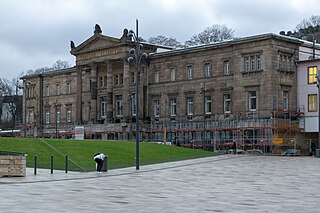
Wuppertal Hauptbahnhof is a railway station in the city of Wuppertal, just south of the Ruhr Area, in the German state of North Rhine-Westphalia. It is on the line between Düsseldorf/Cologne and Dortmund. The 1848 reception building is one of the oldest of its kind. The station was originally Elberfeld station and has been renamed several times since. Since 1992, it has been called Wuppertal Hauptbahnhof. Wuppertal Hauptbahnhof is also the site of lost luggage operations for Deutsche Bahn.
The Lower Rhenish Music Festival was one of the most important festivals of classical music, which happened every year between 1818 and 1958, with few exceptions, at Pentecost for 112 times.
Bergish is a collective name for a group of West Germanic dialects spoken in the Bergisches Land region east of the Rhine in western Germany. The name is commonly used among its speakers, but is not of much linguistic relevance, because the varieties belong to several quite distinct groups inside the continental West Germanic dialect continuum. As usual inside a dialect continuum, neighbouring varieties have a high degree mutual intelligibility and share many similarities while the two more distant ones may be completely mutually unintelligible and considerably different. Therefore, speakers usually perceive the differences in their immediate neighbourhood as merely dialectal oddities of an otherwise larger, solid group or language that they are all part of, such as "Bergish". Bergish is itself commonly classified as a form of "Rhinelandic", which in turn is part of German. Bergish stricto sensu is part of the Limburgish language group, which extends far beyond the rivers Rhine and Maas into the Netherlands and Belgium. They are also part of the East Limburgish group, that is, the varieties of Limbugish spoken in Germany. They combine Low Franconian properties with some Ripuarian properties and are seen as the transitory dialects between them in the dialect continuum of Dutch and German.
The Düsseldorf-Derendorf–Dortmund Süd railway is a partially closed line in the German state of North Rhine-Westphalia from Düsseldorf-Derendorf station to Dortmund South station. Parts of it are still busy, including two sections used for the Rhine-Ruhr S-Bahn.

Wuppertal Zoologischer Garten station is a station on the Düsseldorf–Elberfeld railway in the city of Wuppertal in the German state of North Rhine-Westphalia. The station building was heritage-listed on 31 August 1987. It is classified by Deutsche Bahn as a category 4 station.
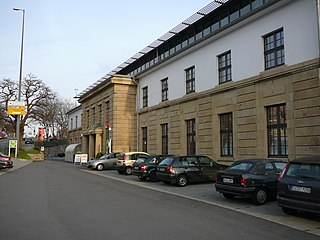
Wuppertal-Steinbeck station is a station on the Düsseldorf–Elberfeld railway in the city of Wuppertal in the German state of North Rhine-Westphalia. The current station building was built in 1913 and it has been heritage-listed since 1991. It replaced an older station building that was built between 1860 and 1870. It is classified by Deutsche Bahn as a category 5 station.
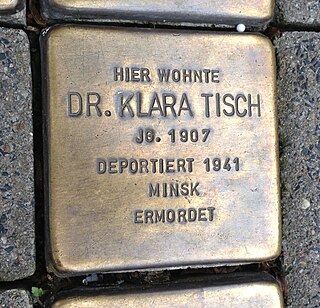
Cläre Tisch, also "Kläre Tisch" or "Klara Tisch," was a German economist.
Wilhelm Neumann-Torborg was a German sculptor whose works are still well-known.
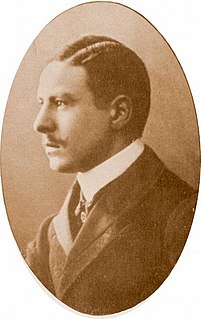
Oskar Erbslöh was a German aviation pioneer.

Friedrich Wilhelm Arnold was a German musician, music seller, publisher and folk-song collector.
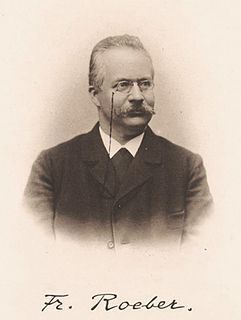
Fritz Roeber was a German illustrator, lithographer and history painter, associated with the Düsseldorfer Malerschule. As Director of the Kunstakademie Düsseldorf, he carried out some significant organizational changes.














